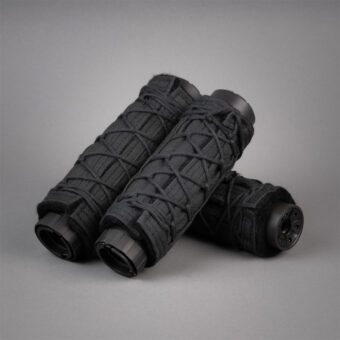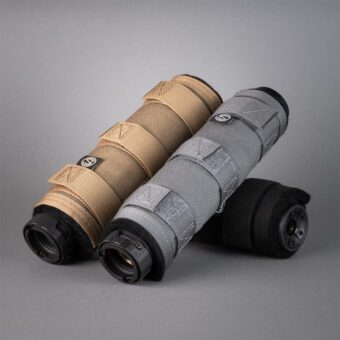Is Direct Thread More Accurate than ASR?
David Higginbotham
Choosing a suppressor is a big decision. There are material considerations and design specifications that will help you find the right options—but then there are some decisions that can be harder to sort out. One of these is how to mount the silencer to your rifle. Today we’re discussing two options: direct thread vs. ASR mount.
The first suppressors I owned were direct thread. Lately I’ve been doing more hands-on work with the SilencerCo ASR mounts, and I like how they lock a suppressor onto the ASR gun. Both are viable options, so I thought I’d test both a direct thread mount and ASR mount to see if either style affected accuracy.
While hardly scientific, I did work with some controlled variables. I used the same rifle for the testing — a Ruger American rifle in .223. The ammunition, scope, range, and even weather were all the same during the testing.
For the suppressor, I used the SilencerCo Hybrid 46M. I attached the suppressor first with the Charlie Direct Thread Mount. Then I put a Charlie ASR Muzzle Brake on the muzzle, and an ASR mount on the Hybrid 46M.
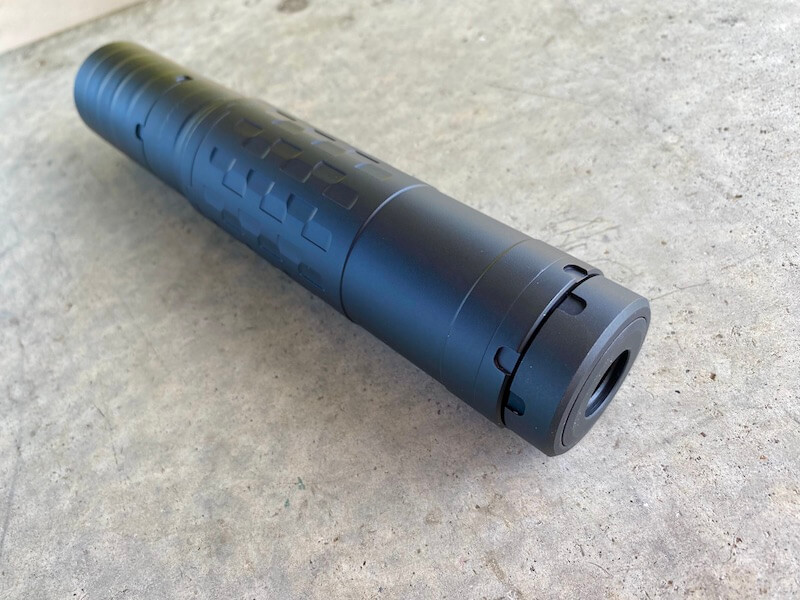
Before we discuss the results, let’s go over the differences between direct thread and ASR mounts, as well as the benefits and drawbacks of each.
Direct Thread Mount
A direct thread mount is a device that attaches to the suppressor body and allows you to screw the suppressor directly to the threaded barrel of your firearm.
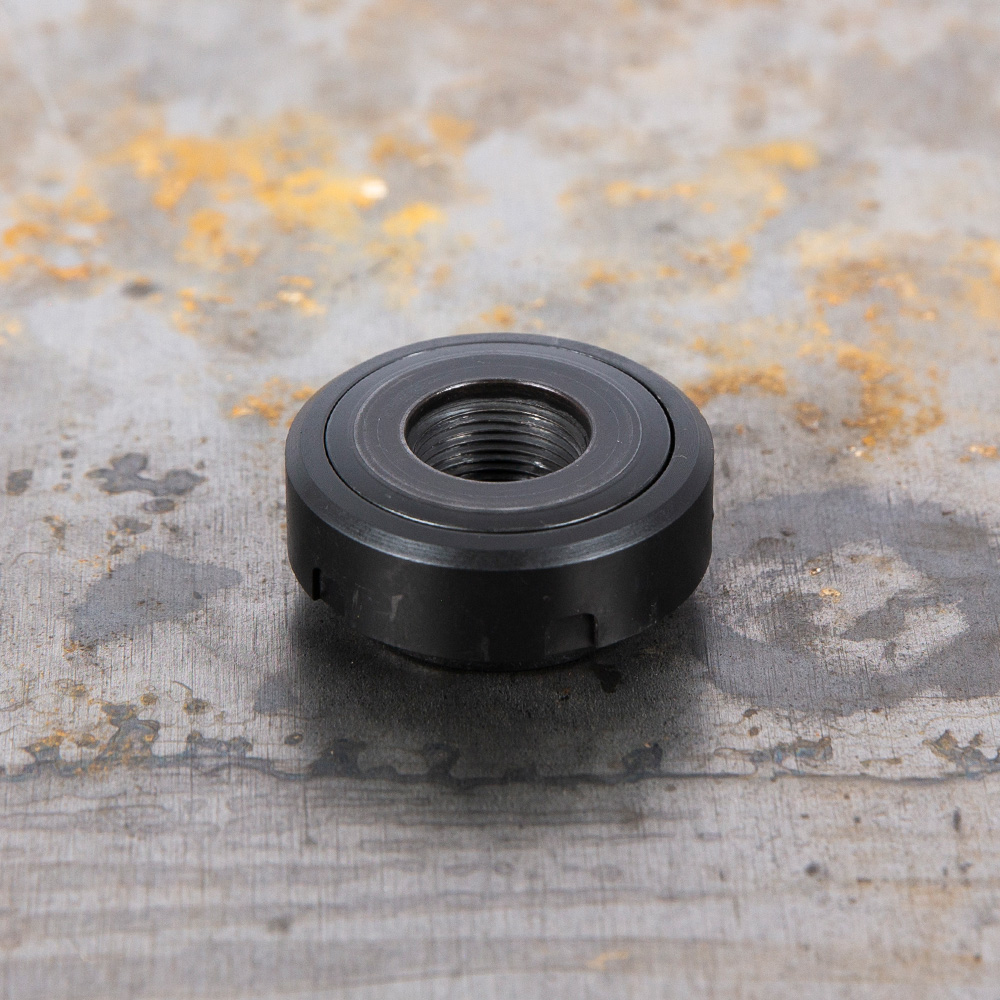
Why choose a direct thread mount?
Convenience. Let’s set aside questions of accuracy for a moment and talk about the practical benefits of a direct thread suppressor. The first is simply the ease.
Direct thread attachments mate with the threads on the barrel. As such, they’re often shorter than other configurations. This is often an attribute that hunters (or anyone who spends more time carrying their gun than shooting it) look for. This short suppressor attachment feature is also one reason why cans like the Hybrid 46M and Omega 36M can be configured in either long or short versions.
The simplicity of the direct thread method is also easier to wrap your head around. SilencerCo goes to great lengths to explain which mount types are compatible with which suppressors and which muzzle devices go with both, but these still require some effort on the end-user’s part — at least during the initial setup.
Simplicity is the key with a direct thread mount.
In contrast, other methods, such as attaching muzzle brakes require careful timing to ensure the force from recoil is distributed appropriately. The ports should face out to both sides, equally. This may require shims between the barrel and the brake that function like very thin washers.
It isn’t complicated — in fact, I’d say just about anyone with even the most basic DIY instincts can do it. Yet it isn’t as easy as the direct thread method, which is more like screwing in a lightbulb (that you just keep turning and turning).
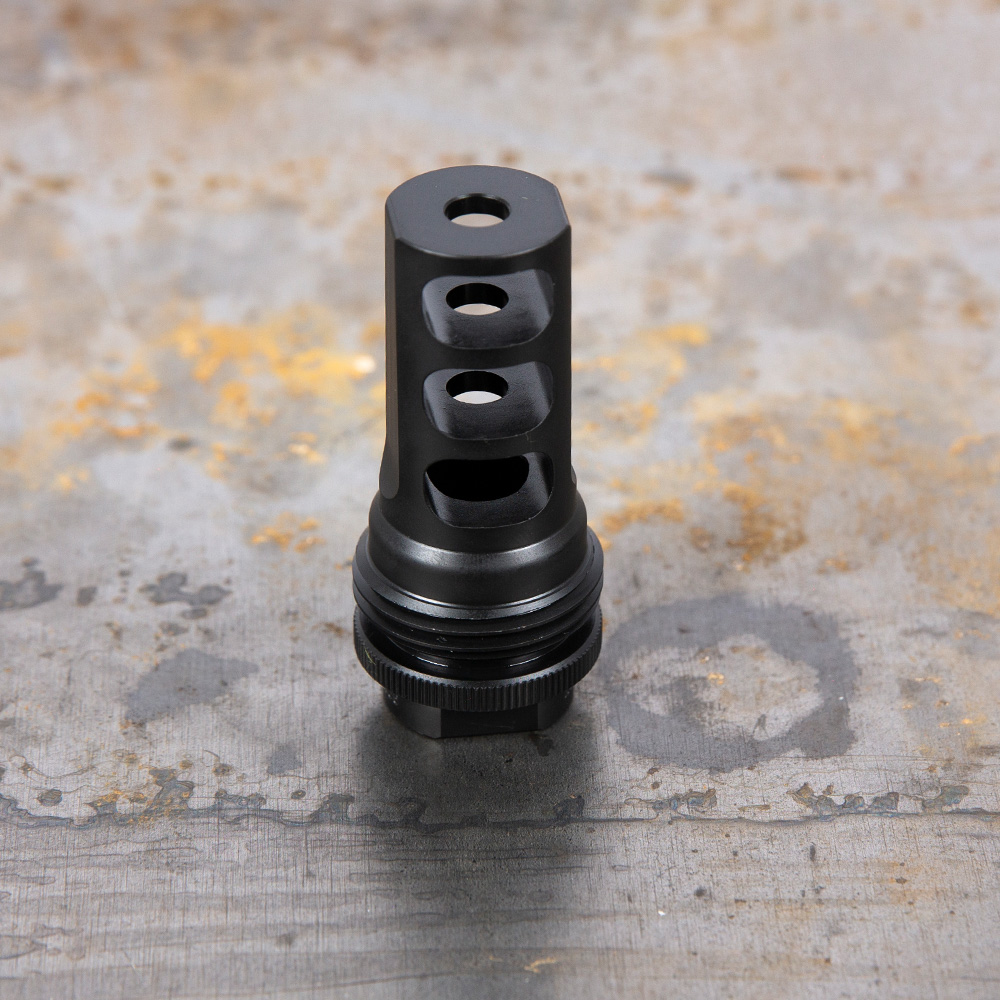
Those of us who leave our silencers on our rifles all the time tend to prefer the simplicity of a direct thread mount. Hunters especially, but also those who like to plink with rimfire suppressors. Even precision shooters find an appeal to the simplicity of the direct thread method. And yet, this simplicity brings us to the inevitable accuracy debate.
Direct Thread Accuracy
On the question about direct thread accuracy, it’s worth noting that precision shooters tend to prefer direct thread silencers. They’re rarely in a hurry to get the guns set up. And the thought is that there’s less obstruction inside the suppressor, allowing gases to flow more smoothly right at the muzzle.
I’m not a long-range guru, but I’ve shot well past 1,000 yards with suppressed rifles and had little difficulty connecting with my targets. Once the rifle is zeroed appropriately, the accuracy never wavers.
This is why I hunt whitetail with a direct thread suppressor on a bolt-action. I’ve got several that I use. I tend to take my Hybrid 46M off of my Savage 110 when I put in in the safe, but I can thread it back on before a hunt with the confidence that I can shoot MOA groups without a shift in zero.
ASR Mounting System
The Active Spring Retention (ASR) Mount is a quick attach / detach system for muzzle devices and suppressors.
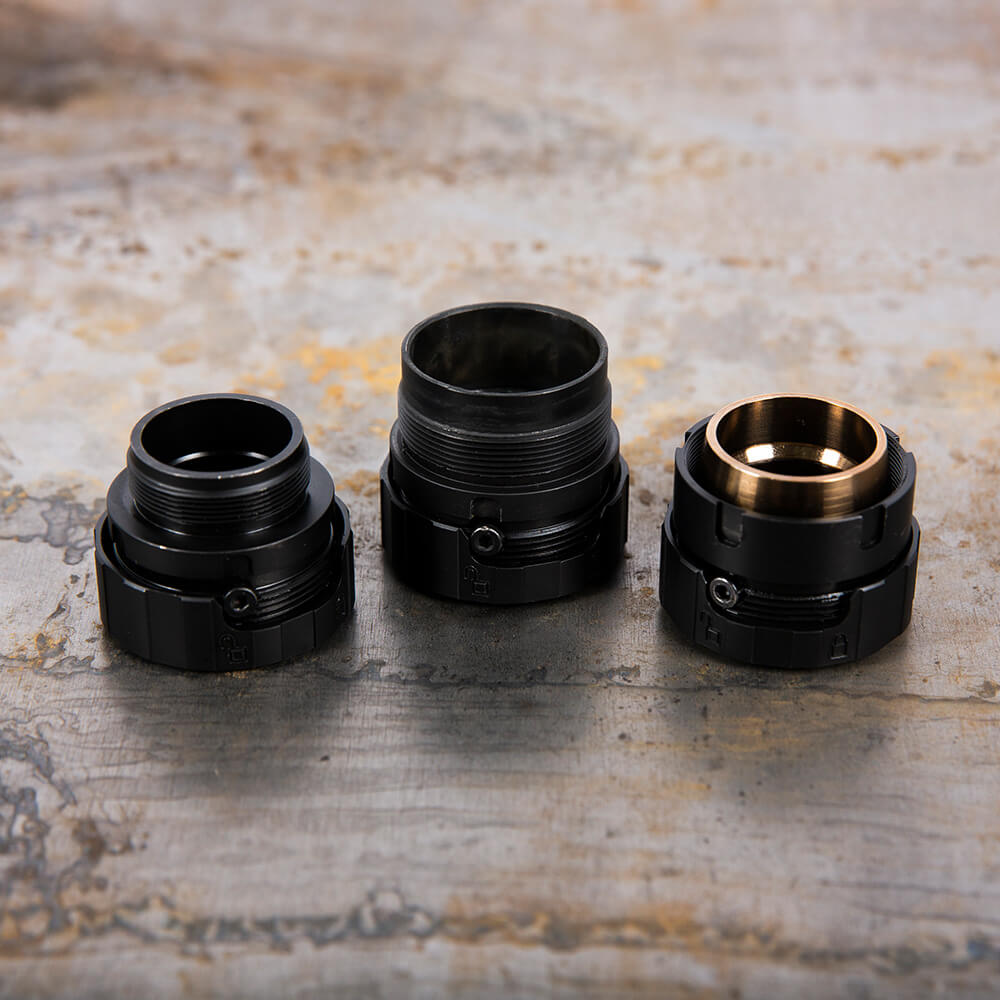
ASR Mounts add an important piece to the connection equation. Where a direct thread mount will interface with the tail-end of the suppressor, an ASR mount attaches to an ASR muzzle device that is attached to the end of the barrel.
As the ASR mount screws down onto the muzzle device, the locking ring should be in the open position. With coarse threads facilitating easy indexing, the suppressor returns to nearly the exact same position every time it is installed.
The spring part has teeth that interface with teeth on the ASR muzzle device. Once the suppressor is fully tightened, a simple turn of the ring applies pressure to the teeth, ensuring a secure and immobile connection. This is the wizardry that prevents the suppressor from shooting loose.
In practice, after the system is set up, the ASR mounting system is faster to connect. The larger threads linking the brake (or other muzzle devices) to the ASR Mount on the suppressor contribute to a faster and more efficient setup.
Why go with an ASR mount and muzzle device?
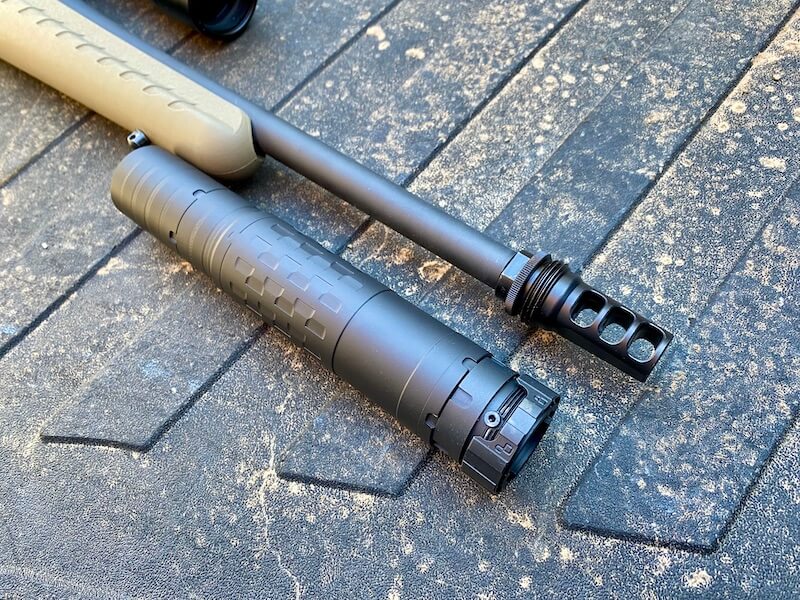
The benefit of the ASR system has everything to do with speed and security. These mounts are easy to affix and detach, and the Active Spring Retention acts as a fail-safe to ensure the suppressor stays firmly in place. It’s a great combination of quick accessibility and unwavering security.
Anyone who has ever taken a direct-thread suppressor to a high-round-count shoot is likely familiar with one particular drawback of direct thread mounts: they can come loose. While this is hardly ever an issue for a hunter, whose volume of fire isn’t high enough, it becomes a major issue for anyone shooting an AR or AK, or even rimfire.
If a silencer loosens, you may see a shift in your point of impact. I’ve yet to have one come off, but it is hypothetically possible that you could shoot so much that you back it all the way off.
And there’s nothing fast about putting on a direct thread suppressor. In fact, to prevent potential damage to threads, the process demands patience and precision when aligning the barrel and suppressor.
Direct Thread vs ASR: Accuracy
As for the accuracy, I’m equally impressed. Shooting at 100 yards with a .223 Ruger American Rifle and a Hybrid 46M, I see very similar results. With the same gun, scope, ammo, range conditions, and the same shooter behind the trigger, I’d be hard-pressed to attribute any of my results to the type of suppressor mount.
In the end, the choice may have less to do with the accuracy potential and more to do with the performance expectations of the platform.
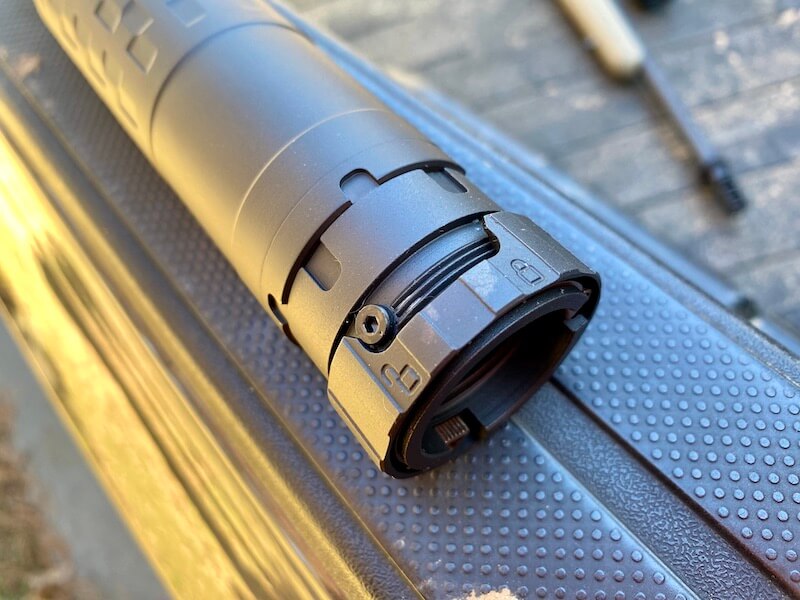
A Case Study in Performance Expectations
This humble Ruger bolt-action .223 is short enough to carry in the woods, yet accurate enough to shoot one-hole groups at 100 yards. With good glass and a bipod, it becomes a functional tool. The combination is superb, and one I had been running with the Hybrid 46M on a direct thread mount — but not anymore.
Like many .223 rifles, the Ruger benefits from a brake. I’ve had a hell of a time keeping up with the thread protector. Now, with the ASR Brake timed on the end of the barrel, I’ve got even more confidence in the platform. This is a great gun to carry in a soft case or toss in the back of the truck. It goes with me frequently, and — though I’m a huge fan—it is hardly precious. Now, it is even less so with the muzzle well protected.
I’ll still keep the direct thread option for the Savage. My 110 has a 22” barrel. I have no need for a brake on it, really, as I can take the recoil of the .308 with no difficulty. This is a rifle I shoot at much longer distances, and I don’t need the speed of a follow-up shot. Still, the Hybrid 46M eats up some recoil and takes the bite out of the rifle’s report. I’m inclined to keep the direct thread on this and leave it in place — even in the case I tend to keep the gun in on my way into the woods.
Direct Thread vs. ASR: A Final Analysis
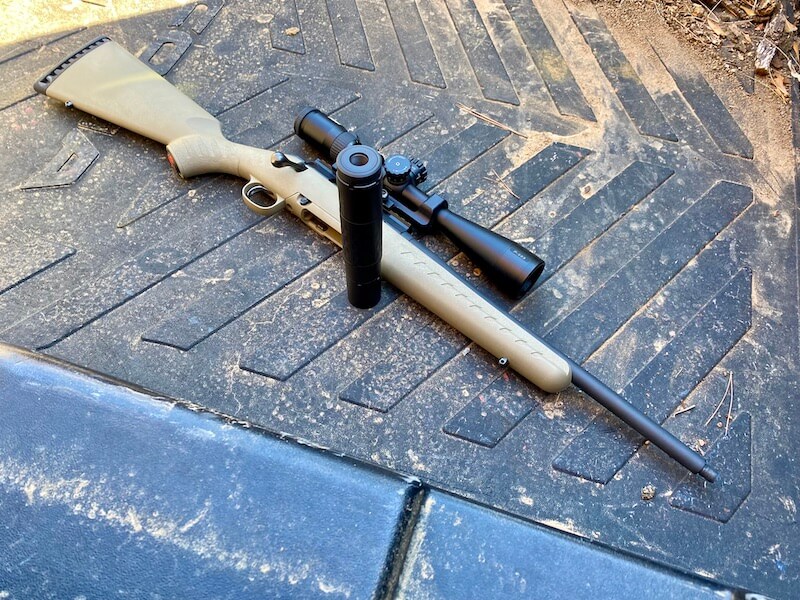
The direct thread mounts provide ease and accuracy. ASR mounts are fast, keep the threads protected, and provide functionality when the gun is not capped off with a suppressor. Once you are zeroed and familiar with the rifle, both options will help your accuracy.
Mounts aside, we can’t forget the value of the suppressor. Having taught many new shooters, I have seen this firsthand. Many new shooters flinch at the sound of a centerfire rifle and some will tighten up when they anticipate the kick. With a significant reduction of noise and a noticeable reduction of recoil, shooters tend to pay more attention to fundamentals. This improves their form, with less flinching, and develops their follow-through. Either mounting option is going to help.






